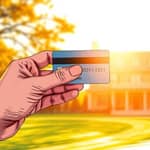
In an era where competition is fierce and customer choices abound, brands must anchor their strategies in lasting relationships. A well-crafted loyalty program not only retains customers but also fuels sustainable growth. By transforming one-time buyers into enthusiastic advocates, businesses can reduce costs and cultivate a vibrant community of repeat patrons.
This comprehensive guide delves into the critical role of loyalty programs, the latest industry trends, design best practices, and actionable steps to create or refine your program for maximum impact.
As the digital marketplace expands, rising customer acquisition costs make retaining existing customers more valuable than ever. Studies reveal that businesses lose an average of $29 for every new customer acquired, emphasizing the need to nurture the relationships you already have.
Data shows that repeat customers spend sixty-seven percent more than first-time buyers, driving significant revenue growth. Moreover, 84% of shoppers admit that a loyalty scheme influences their decision to stick with a brand. These figures underscore the power of a loyalty-driven growth engine.
In 2025, loyalty strategies are evolving at a rapid pace. Among the top trends:
Brands that invest in these areas see higher redemption rates, greater advocacy, and reduced churn. For instance, 58% of programs offering tailored rewards enjoy increased engagement, while 43% leverage gamification to keep members motivated.
Designing a compelling program requires a blend of clear structure and innovative elements. Essential features include:
From points-based and tiered systems to paid memberships and coalition rewards, selecting the right format ensures that each reward motivates desired behaviors and fosters brand loyalty.
Tracking performance is essential for continuous improvement. Focus on metrics that reveal both engagement and financial impact. A concise dashboard should include:
These numbers translate to a measurable return on investment that validates the loyalty approach time and again.
Use dashboards and analytics platforms to track redemption rates and CLV, and tie insights back to program adjustments, ensuring you consistently deliver value to members and the bottom line.
While loyalty initiatives yield strong returns, challenges persist. Brand loyalty declined from 77% in 2022 to 69% in 2024, reflecting hyper-competition and easy brand switching.
To stay ahead, embrace constant innovation and ethical marketing. Integrate AI-driven insights for hyper-personalization, explore partnerships for unique rewards, and communicate transparently to build trust. Responsible programs that align with customer values will drive engagement and long-term advocacy.
Customer loyalty programs are more than marketing tools—they are strategic drivers of growth and community. By understanding the latest trends, designing with precision, and committing to ongoing optimization, brands can create programs that resonate deeply and deliver substantial returns.
Start with clear objectives, invest in the right technology, and prioritize the customer experience. With these elements in place, your loyalty program will transform one-time buyers into passionate advocates, fueling repeat business and sustainable growth.
References













